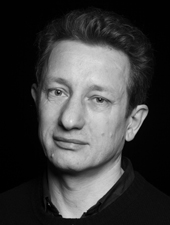Hyun, Minsuk, Taranda, Julian, Radeljic, Gianna, Miner, Lauren, Wang, Wengang, Ochandarena, Nicole, Huang, Kee Wui, Osten, Pavel, Sabatini, Bernardo L (January 2021) Social isolation uncovers a circuit underlying context-dependent territory-covering micturition. Proceedings of the National Academy of Sciences of USA, 118 (1). e2018078118-e2018078118. ISSN 0027-8424
Abstract
The release of urine, or micturition, serves a fundamental physiological function and, in many species, is critical for social communication. In mice, the pattern of urine release is modulated by external and internal factors and transmitted to the spinal cord via the pontine micturition center (PMC). Here, we exploited a behavioral paradigm in which mice, depending on strain, social experience, and sensory context, either vigorously cover an arena with small urine spots or deposit urine in a few isolated large spots. We refer to these micturition modes as, respectively, high and low territory-covering micturition (TCM) and find that the presence of a urine stimulus robustly induces high TCM in socially isolated mice. Comparison of the brain networks activated by social isolation and by urine stimuli to those upstream of the PMC identified the lateral hypothalamic area as a potential modulator of micturition modes. Indeed, chemogenetic manipulations of the lateral hypothalamus can switch micturition behavior between high and low TCM, overriding the influence of social experience and sensory context. Our results suggest that both inhibitory and excitatory signals arising from a network upstream of the PMC are integrated to determine context- and social-experience-dependent micturition patterns.
| Item Type: | Paper |
|---|---|
| Subjects: | organism description > animal organs, tissues, organelles, cell types and functions > tissues types and functions > brainstem organs, tissues, organelles, cell types and functions > tissues types and functions > suprachiasmatic nucleus > hypothalamus organs, tissues, organelles, cell types and functions > tissues types and functions > hypothalamus organism description > animal > mammal organism description > animal behavior > micturition organism description > animal > mammal > rodent > mouse organism description > animal > mammal > rodent |
| CSHL Authors: | |
| Communities: | CSHL labs > Osten lab |
| SWORD Depositor: | CSHL Elements |
| Depositing User: | CSHL Elements |
| Date: | 5 January 2021 |
| Date Deposited: | 29 Apr 2021 18:39 |
| Last Modified: | 24 Jan 2024 21:13 |
| PMCID: | PMC7817200 |
| Related URLs: | |
| URI: | https://repository.cshl.edu/id/eprint/39951 |
Actions (login required)
 |
Administrator's edit/view item |

